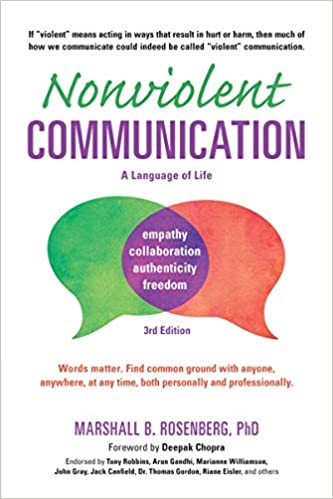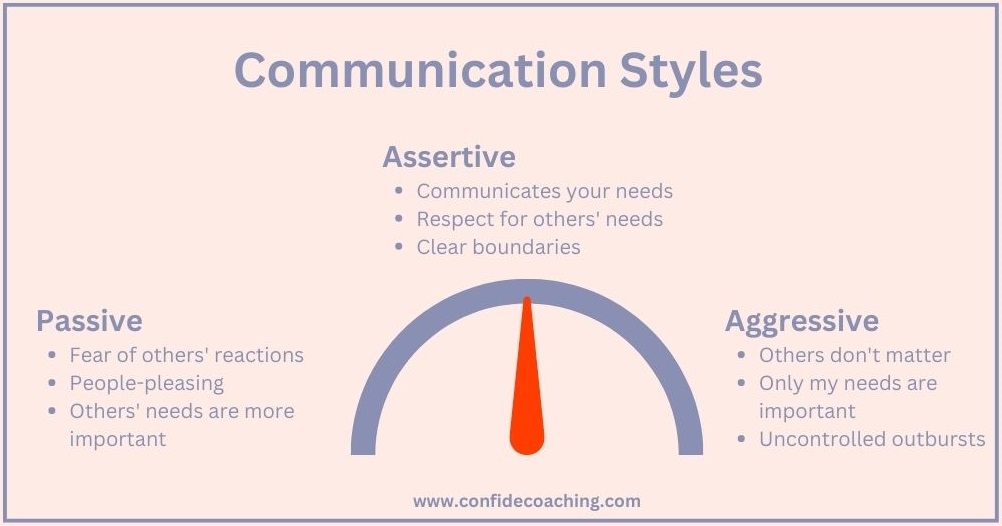
Nonviolent Communication or NVC can help develop a positive workplace environment and create psychological safety. A company that practices NVC will see the company culture flourish with collaboration and lower turnover.
What is Nonviolent Communication?

Marshall B. Rosenberg’s book became an instant classic for conflict resolution.
Nonviolent communication is a way that helps you reframe how you hear others, how you can express yourself, and how you can find solutions to conflicts by focusing on what others feel, request, and observe.
It is a tool that can help you build a compassionate connection between people in which you show that you value the needs of others and cooperate with them. Having good relationships and connections with coworkers and superiors is immensely helpful and promotes camaraderie and a pleasant work environment. When you are in an environment that offers natural giving and receiving, you will naturally want to collaborate.
Most importantly, people who develop NVC skills in the workplace are less likely to feel anxious while working. They feel confident, appreciated, and satisfied when interacting among their colleagues.
Additionally, when you have a good relationship with other employees, management and staff in your company, you are more likely to prosper and excel in your field. Not to mention, it could positively affect your annual review and your personal bottom line.
How do you Practice Nonviolent Communication?
 Non-violent communication improves relationships and connections between different groups of people. Implementing this framework requires honest expression of thoughts and empathetic listening.
Non-violent communication improves relationships and connections between different groups of people. Implementing this framework requires honest expression of thoughts and empathetic listening.
Here are some steps to follow to develop the NVC skillset and use it as an effective tool in your everyday work life.
Observation of NVC
NVC stresses that you observe others without judging them. This means that, when communicate with others, present facts humbly. For instance, instead of saying, “You never listen when I speak in meetings,” you can say, “Today, I noticed you were distracted.”
When you practice NVC, you will learn how to separate your personal judgment from the behaviors you observe. Avoiding judgments can help prevent arguments and unnecessary conflict, and open lines of communication, which often leads to a solution.
NVC and Feelings
The nonviolent communication method emphasizes your to taking responsibility for your own feelings. In other words, you need to learn how actions and words influence your emotions.
So, whenever your colleague says something negative to you, don’t take it personally. Avoid fighting back or responding with sarcasm or petty insults. Evaluate your feelings, and discuss them with the other person.
If you do, in fact, get upset because of what they said, you can tell them that you are sorry to hear that and apologize for causing them distress. Ask them to discuss the matter instead of blaming each other. It’s not about what is right or wrong, it’s about maintaining a healthy working relationship and using your emotional intelligence.
Your compassionate response can you understand each others’ feelings and encourage them to resolve the issue.
NVC and Needs

Practicing NVC can help reduce stressful situations in the workplace.
Nonviolent communication helps you understand and connect your feelings and unaddressed needs. In most cases, these needs are fundamental and common to all human beings. Furthermore, expressions like frustration and anger typically indicate needs like acceptance and respect that one feels have gone unnoticed.
At this step, you need to think about your unfulfilled needs. It may be challenging for you to discover the reason behind negative, hurtful, and shameless behaviors. This is why getting help from experts who can give you NVC training so that your behavior doesn’t cause you to experience difficult and unnecessary social or professional situations.
When you are fully aware of your needs and whether they are being satisfied, you can use them to make an effective request to your fellow coworkers.
Requests Using NVC
This is the last step in which you make specific and practical requests for things that can improve your life. Of course, you need to make the request in a way that can enable the other individual to fulfill your need compassionately.
Keep in mind that requests are not demands that can result in unhelpful and ineffective communication exchanges. It’s a humble way to ask someone for help. Moreover, you need to ask using positive language to encourage the other.
For instance, instead of saying, “I don’t want you to do this project, this is mine,” say, “I’m looking forward to handling this project, as it really fits my expertise.” The best way to separate your request and demands is to always add your needs and feelings to them.
Bottom Line about NVC
Developing nonviolent communication can be challenging. It’s a practice that develops over time as you observe your reactions. That being said, it can significantly impact the corporate culture, and people around you, in a positive way.
p.s. – Do you have more uncomfortable conflict in your life than you want to be having? Book a time with me for free and we’ll see if we’re a fit for working together.

Paul Strobl, MBA, CPC
Owner of Confide Coaching, LLC
Paul is a Master Life Coach for individuals, executives and business owners. Originally from Houston, Texas, he has been location independent for most of his adult life. He currently resides in the Rhodope Mountains of Bulgaria near the Greek border with his brilliant wife, 13-year-old stepson (officially adopted in 2021!) and a Posavac Hound rescue.


